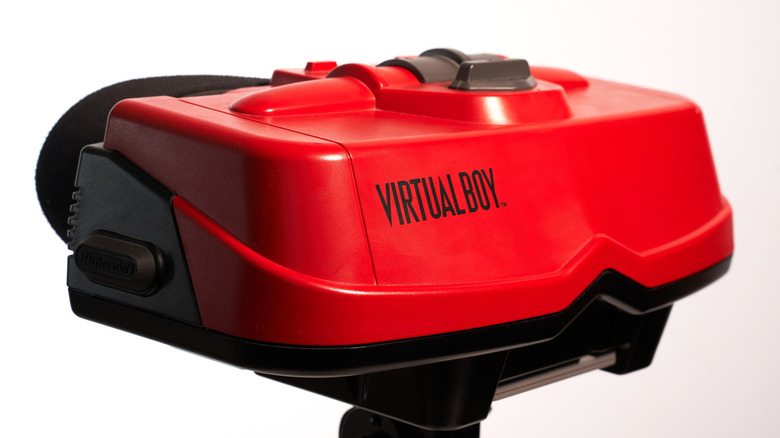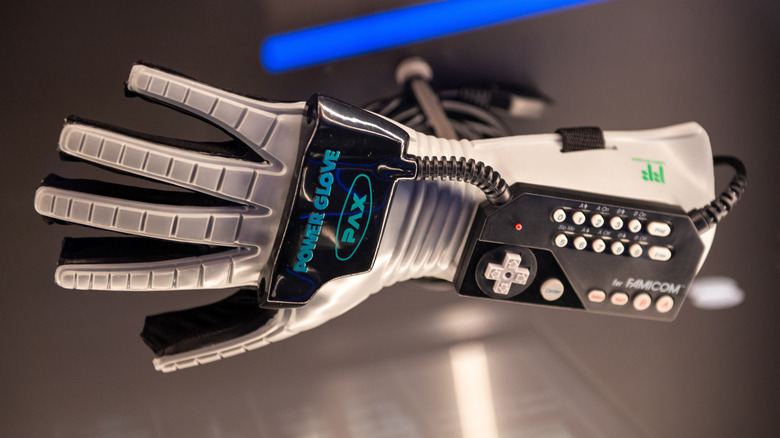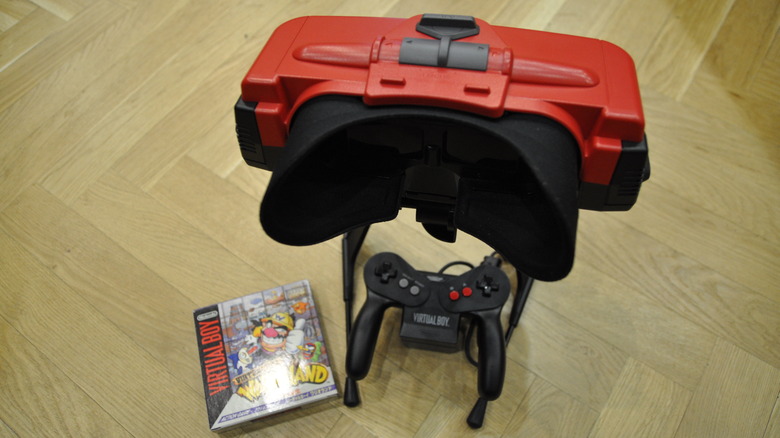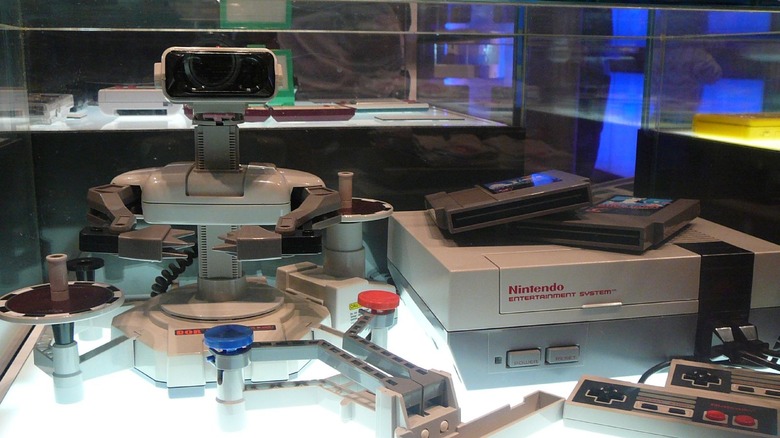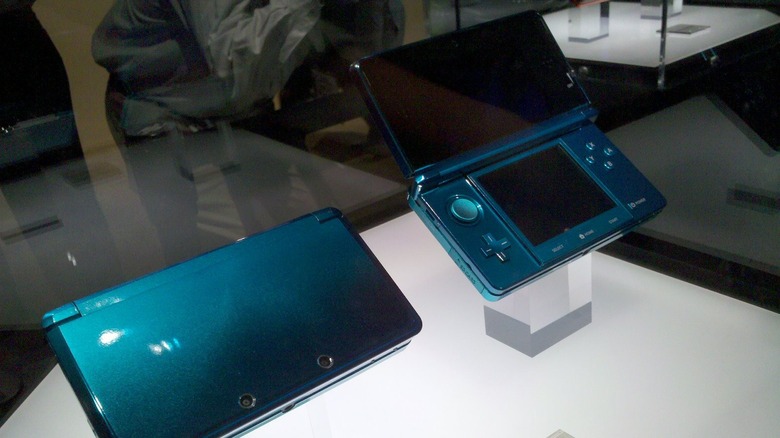5 Products Nintendo Should Have Never Discontinued
Nintendo has an extensive history of creating entertainment, starting long before the original Nintendo video game system hit the market. This is because Nintendo was actually founded in 1889 in order to make playing cards — certainly a different hobby than everybody's favorite game involving a certain mustachioed plumber. However, considering the length of time Nintendo has been in operation, it has certainly given the beloved producer plenty of time to try out tons of different things — some successful, and some not so much so.
The Nintendo Entertainment System (NES) was released in 1985 and in just a few short decades following, Nintendo released tons of peripheries, controllers, accessories, and consoles. While some of these have helped bring video games to the masses — like the motion-controlled Nintendo Wii — there are several objects in Nintendo's history that have fallen out of production for a myriad of reasons. However, nostalgia is a powerful thing, and there are many devices and items that many would love to see come back in some form or another.
The Power Glove would do much better these days
One of the most unique offerings from Nintendo — which could be considered way ahead of its time — was the Nintendo Power Glove. Featured in the movie "The Wizard," the Power Glove was meant to replace the normal square handheld controller with a glove that was adorned with all manner of Nintendo's controller buttons. This was revolutionary at the time, as it was an early attempt from Nintendo to try something very different than what was being offered on the market. However, it is important to note that the Power Glove was actually produced by Mattel, though it received support and endorsement from Nintendo. This is why the Power Glove was a predominant plot point of the aforementioned Nintendo-produced movie.
While the Power Glove certainly generated tons of hype and speculation about the future of video game controllers, ultimately a lack of support and only two games made specifically for the device — "Super Glove Ball" and "Bad Street Brawler" — spelled doom for the unique Power Glove. Though users could certainly utilize the Power Glove for other games, it, unfortunately, didn't provide any sort of natural boon or better movement than the normal Nintendo controller and the Power Glove soon fell out of favor. Surprisingly, early attempts at virtual reality in the 1990s harnessed the Power Glove, and with a few improvements and adjustments for the modern-day age, the Power Glove could certainly see much better and sustained usage. Everybody loves motion controls, right?
{Featured image by edwardhblake via Wikimedia Commons | Cropped and scaled | CC BY 2.0}
The Virtual Boy would be right at home among virtual reality
Nintendo has a recurring trend when it comes to their products being ahead of the curve, with probably one of the largest examples coming in the form of the Virtual Boy console. Originally hitting the markets in 1995, the Virtual Boy is a red and black video game system that instead of connecting directly to a television, like many of the Virtual Boy's contemporaries, instead was a complete stand-alone system. And stand alone it did. This is because the Virtual Boy was an early foray into 3D technology, and the system looked very much like the virtual reality headsets that seem to proliferate today.
What stopped the Virtual Boy's ascension at the time happened to be a combination of factors, such as a lack of resources to properly develop the system and a price tag of $179.99 (roughly $360.34 in 2023 money). The Virtual Boy utilized a 32-bit operating system, which was somewhat of a transitory step between the Super Nintendo, which is 16-bit, and the Nintendo 64, which of course is 64-bit. Unfortunately, this meant that Nintendo was forced to reallocate resources from the Virtual Boy to the Nintendo 64. This caused the Virtual Boy to suffer and the system only managed to sell 800,000 with only 22 games available worldwide. Considering the current rise of virtual reality, a newer and updated iteration of the Virtual Boy could prove to be a surprising success. Assuming Nintendo moves away from that drab red-colored display, of course.
{Featured image by Christo via Wikimedia Commons | Cropped and scaled | CC BY-SA 4.0}
Robots are the future, and R.O.B. would be an awesome addition
Another fantastic product that may occupy a warm place in some people's memories is Nintendo's R.O.B., which stands for Robotic Operated Buddy. First packaged with the very first Nintendo home entertainment system, the R.O.B. toy was bundled in hopes of buoying sales. The reason why Nintendo wanted to ship R.O.B. units with the system was entirely based on the video game crash of the 1980s, and Nintendo believed that the R.O.B. toy would help attract younger consumers to the brand. It seems to have worked quite well.
Of a survey group numbering 200 strong, most people reported that the R.O.B. was one of the primary reasons for buying a Nintendo. Measuring around 9 inches tall, the R.O.B. could be used in conjunction with the Nintendo, going so far as to have two games that not only supported R.O.B. toys but required them — like "Gyromite" and "Stack-Up." Surprisingly, R.O.B. still pops up in Nintendo games as cameos, Easter Eggs, and even as a playable character in the "Super Smash Bros." game franchise. With the amount of technology currently out there and the growing obsession with automated constructs, a new version of R.O.B. might find a warm reception. There is a much greater selection of peripheries and hardware these days, but R.O.B.s still fetch a pretty penny among resellers. Imagine what you could do with a smartphone or Nintendo Switch-controlled R.O.B. and some basic artificial intelligence programs.
{Featured image by Matt Grommes via Wikimedia Commons | Cropped and scaled | CC BY-SA 2.0}
The Super Scope could capitalize on the success of modern day shooter games
With the overwhelming popularity of shooting-style video games like "Call of Duty" and "Fortnite," now would be the perfect time for Nintendo to revive the Super Scope — the significantly more robust iteration of the original Nintendo accessory known as the Zapper. Released in 1992, the Super Scope is a periphery for the Super Nintendo console that allows users the tactile pleasure of holding a combination bazooka and gun. While the Zapper is a simple handheld light gun, the Super Scope expanded on the technology and was instead held with two hands and usually placed on the shoulder — just like a bazooka or rocket-propelled grenade.
Joking aside, the Super Scope is supported with 11 specific games, like "Yoshi's Safari," "Super Scope 6," and "Battle Clash." Unfortunately, the Super Scope didn't perform as well as Nintendo had hoped, and it was ultimately discontinued by 1997. As mentioned earlier though, shooter games have tons of players and interest, and Nintendo is certainly quite familiar with motion-controlled accessories. A Super Scope these days would probably do significantly better than back in the 1990s. People certainly like their unique means of playing video games, and who wouldn't want the weapon featured at the end of the 1993 film "Super Mario Bros?"
{Featured image by Tim via Wikimedia Commons | Cropped and scaled | CC BY-SA 2.0}
People still pine after the Nintendo 3DS
One of the most prolific products that Nintendo has discontinued that would certainly be welcomed back with open arms by many is the handheld Nintendo 3DS. Utilizing the same stereoscopic technology that creates 3D images that were used in the Virtual Boy, the 3DS first became available in 2011. What set the Nintendo 3DS apart from other Nintendo handhelds like the Gameboy is that the 3DS could create three-dimensional images without the player having to wear special glasses. Additionally, the 3DS also featured two different screens, which certainly makes inventory management in video games a total breeze.
During its run, the Nintendo 3DS sold just shy of 76 million units and just under 400 million games. This highlights just how popular the handheld device was but it was eventually discontinued in 2020, much to the chagrin of longtime fans. Although Nintendo still dominates the handheld scene with the Nintendo Switch, some 3DS aficionados still long for a return of a dedicated mobile system on social media, which is often augmented with pangs of nostalgia for the beloved device.
There is definitely a group of people who would love to see more Nintendo 3DS out there, as well as for Nintendo's online storefront for the 3DS to be restored. For a time, Nintendo even offered to repair broken 3DS until the end of March 2021, though they had to cut this short once they ran out of spare parts. Again, this reinforces how well the Nintendo 3DS was received, and there are people out there that would absolutely love to get their hands on a brand-new Nintendo 3DS.
{Featured image by Shuichi Aizawa via Wikimedia Commons | Cropped and scaled | CC BY-SA 2.0}
